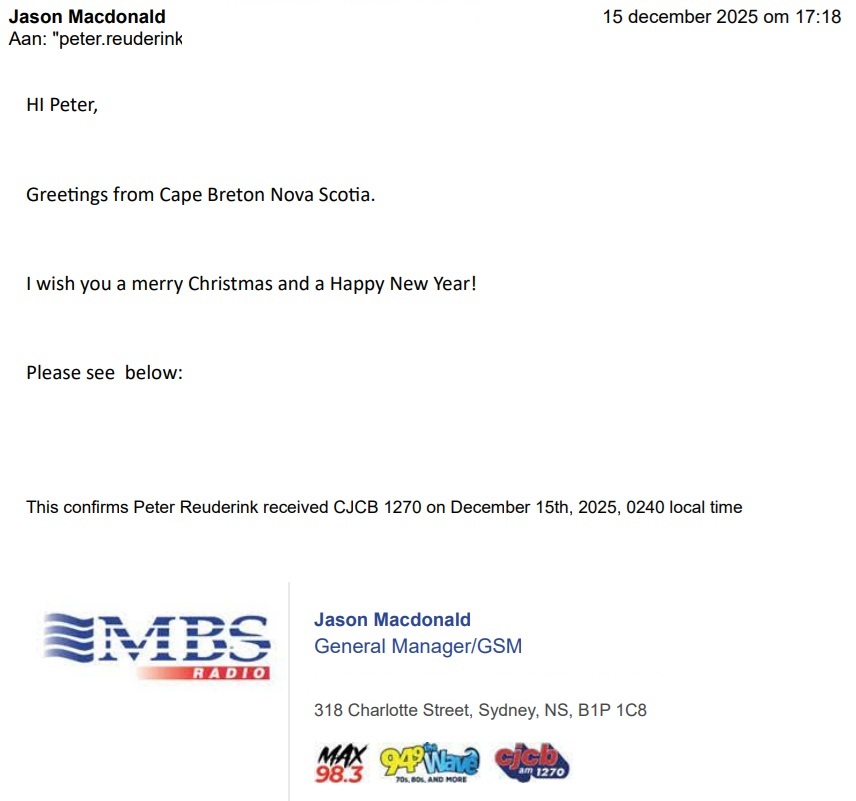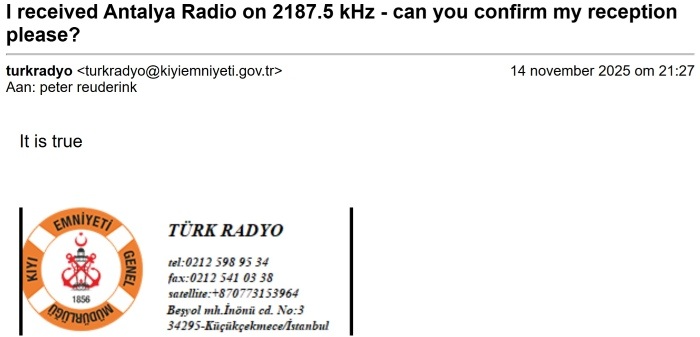
Power 927 broadcasts from Abbiategrasso, south west of Milan. I’ts a pity that a station that boasts that it “brings the medium waves back to life” doesn’t foster the DX community that supports exactly this purpose. I heard Power 927 since 2022 and sent multiple reports. Never got a reply.
The good news is that Antonello Napolitano, the man behind DX Fanzine, runs a DX program “Bande Rumorose” on a couple of Italian LPAM stations. Power 927 is one of them. And he does QSL!

This is what Antonello wrote:
Thank you very much for your report on the reception of the DX Show in Italian “Bande Rumorose”.
It has been checked and agrees with our log.
Attached please find a F/D eQSL for listening to the DX Show “Bande Rumorose” (If it contains errors, don’t hesitate to write to me again!).
Let’s explain the meaning of the QSL’s cartoon.
“Bande Rumorose” literally translates as “Noisy Bands” and means “Rumble Strips.” The key point of the image is precisely the wordplay. In road signage, “Bande Rumorose” refers to those strips on the asphalt that make the car vibrate and produce noise to attract the driver’s attention.
Here, however, “Bande” (Italian for “Bands”) should not be understood in its road-related meaning (“Strips”), but as radio bands — specifically medium wave and shortwave.
The illustration suggests that, from the point of view of “ordinary” people, that is, those who are not passionate about radio, these radio bands appear to be nothing more than a collection of noise, static, interference, and incomprehensible signals. Just as rumble strips on the road are annoying to drivers, radio bands seem “noisy” and uselessly chaotic to those who fail to grasp their appeal.
The cartoon therefore plays on the contrast between the common perception: just annoying noise, and that of the DXers: signals, communications, QSLs, passion
The pneumatic drill becomes an extreme metaphor for the attempt to “silence” or destroy that world which, for those who don’t love it, seems like nothing but a lot of racket. It is an affectionate irony toward a passion that few people understand, but which, for those who live it, is anything but noise.
For your information, “Bande Rumorose” is being carried over 5 italian MW stations (Radio Metropolis, Radio Briscola, Emmereci Radio (or Media Radio Castellana), Power 927 and Radio Centrale Milano. Future plans call for the addition of other medium wave stations in Italy and, hopefully, of a shortwave relay, too!
“Bande Rumorose” is also distributed via its channel on YouTube which can be found at this link: https://www.youtube.com/@BandeRumoroseChannel
The program, which I describe as an old style DX show, consist of DX News, profile and/or history of both, MW and SW stations from all over the world, interviews with DXers and shortwave personalities (for example Dino Bloise) and logs of recently received medium and short wave stations (some of them accompanied by good quality recording of their jingles or station identification announcements!).
“Bande Rumorose” is on air as follows (All times CET = UTC+1 hour):
• Emmerreci Radio, Castel San Pietro Terme (BO), Sundays, at 1100, Fridays at 2300 on 711 e 1098 kHz.
• Power 927, Abbiategrasso (MI), Sundays at 1100, Mondays, Thursdays, Saturdays, at 2100 on 927 kHz.
• Radio Briscola, Lenta (VC), Sundays, at 1100 and 1830 on 1449 kHz.
• Radio Centrale Milano, Milano, Sundays, at 1030, Mondays, at 2300 on 1575 kHz.
• Radio Metropolis, Trieste, Sundays, at 2205 on 1503 kHz and 93.90 MHz FM for the city of Trieste.
Reception reports with comments on the content of the show are welcome (Short mp3 recordings appreciated) EXCLUSIVELY to: banderumorose@dxfanzine.com
Please note that reports sent to any other e-mail address, even if they are under my control, will not be verified!
For the sake of good order, let me add that reports based on reception via public remote SDR receivers (Twente, Kiwi and so on) will not be verified.
The reason is simple: such reports are useless as we can check such online SDR receivers by ourselves.






















